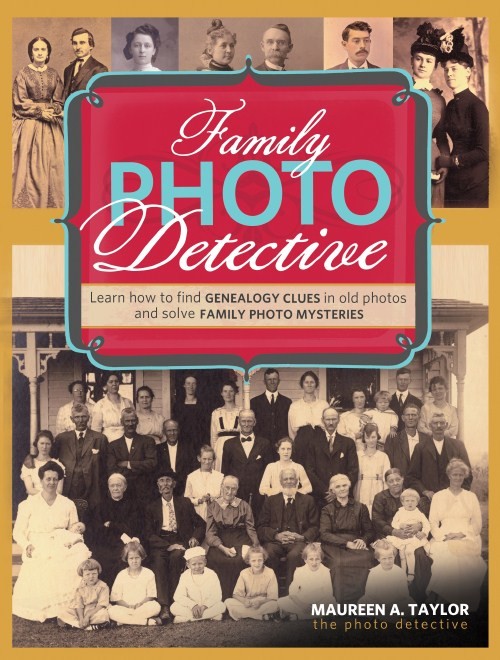Sanborn Fire Insurance Maps for Genealogy
Show Notes: Discover Sanborn Fire Insurance maps with Julie Stoner of the Geography and Map Division of the Library of Congress. Learn the best search strategies, how to download the Sanborn maps for free, and hidden online resources! Sanborn maps are an invaluable tool for family history because they provide an up-close look at the places where your ancestors lived.
Watch the Video:
Show Notes
Resource: Download the ad-free Show Notes handout
(Premium Membership required)
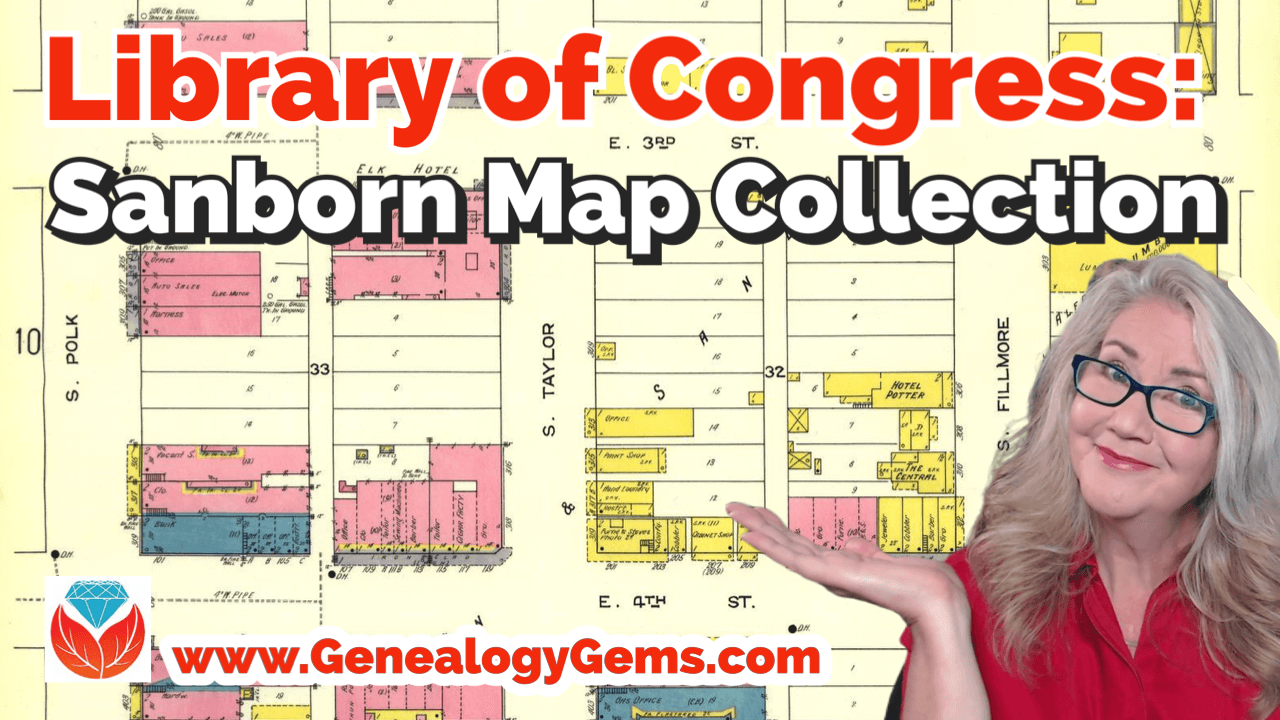
Sanborn Fire Insurance Maps for Genealogy
(This interview has been minimally edited for clarity.)
Lisa: Today we’re talking about Sanborn fire insurance maps and how we can use them for genealogy. They’re available at the Library of Congress. Here to tell us more about that is Julie Stoner. She’s a reference specialist in the geography and map division of the Library of Congress.
Julie: Thanks so much, Lisa. Happy to be here.
I adore the Sanborn fire insurance maps because they give us such a unique perspective and view of our ancestors’ world.
What are Sanborn Fire Insurance Maps?
Start us off and tell us exactly what are Sanborn fire insurance maps?
Julie: The Sanborn fire insurance maps are a uniform series of large scale maps. They date starting from about 1867, though, they mainly start in the 1880s, and they run mostly through the 1950s. There are some from later dates as well.
It was a company started by a man named D.A. Sanborn. He was drawing these maps at a building level to sell to fire insurance companies so that they could then assess how much to charge people for the fire risk of their building. We use them for a lot more things today than they were originally intended for because they show the building level details of a city.
We have over 12,000 cities and towns represented. Some smaller towns may only have a few sheets. But the larger cities may have multiple volumes. They would go back and create a new map every 10 or 15 years or so. Therefore, you can really see how a city changed over time and how the buildings changed over time, and how a neighborhood was built. These maps can be used for all sorts of things now.
Lisa: I love the fact that they have such detail and are really unique. There really aren’t any other maps quite like these, are there?
Julie: It’s true. We do have other maps, like real estate atlases, and things like that of maybe a few cities, here and there, like Washington D.C. or New York. We have land ownership maps, but nothing of quite this scale or detail.
Sanborn Fire Insurance Maps Online Collection
Lisa: Let’s talk about the scale of the map collection. At the Library of Congress you have the physical map collection, and then there’s the collection that we can access online. Tell us a little bit about the scope of the collection? And does it vary whether we’re online or in person?
Julie: It does vary a bit because of copyright restrictions. As I said, we have about 12,000 different cities and towns represented, that equals over 700,000 map sheets. So, that’s a that’s a lot of sheets of maps. And a few years ago, the library, in conjunction with a third party, took on a project to scan all of the public domain Sanborn maps. Public domain means that there are no copyright restrictions on those maps. So that included anything published before 1922 at that point. Then anything published before 1964, in which the copyright wasn’t renewed. The library took on this project to scan all those, and those are completed and are all online on our website and can be downloaded.
That copyright date is now a rolling date. This means that there are now maps between 1923 and 1926 that are public domain that we haven’t scanned yet, and we are working to get those scan to get those online. And as soon as new maps come into the public domain, we hope to process them and upload those when that happens. So, a very large chunk of the Sanborn maps are online. But, if they are not, you can always come and see them in person as well, because we do have the physical copies.
Sanborn Map Resolution
Lisa: You mentioned that the part that the part of the collection that is in the public domain is available online. And they’re downloadable. Are those pretty high-resolution maps, so that we’ll be able to use those in our own genealogy projects?
Julie: For sure! They are definitely high resolution. The library scans them at the highest resolution that we can and so there’s actually a variety of files that you can download. We have JPEG images, which are a bit lower quality but are good for something like PowerPoints or computer screens. And then we have our TIFF files, which are the largest high-resolution files which have. These are a good size for printing.
Lisa: I know that the online collection, which I think most of our folks would be interested in accessing from home easily, is at the Library of Congress at the loc.gov website at https://www.loc.gov/collections/sanborn-maps. Tell us a little bit about what we’ll find there on the website.
Fire Insurance Map Research Guide at the Library of Congress
Julie: Sure, so that link that you said is a landing page for our digital images. Let’s start with the fire insurance map research guide that we have that is about our fire insurance maps in general, not just the Sandborn maps. There are a few other companies though Sanborn took those over in time. They became pretty much became the only one.
On the research guide page, there’s a large section on the left side of the page that says Sanborn Fire Insurance Company Maps. If you click on that, you will find a number of links to help you with your research of the Sanborn Fire Insurance Company maps.

The Research Guide at the Library of Congress
How to Search for Sanborn Maps
I want to point out the easiest way to find the maps. Under the searching for Sanborn Maps tab you will see some information including a link to our Sanborn Fire Insurance Map Checklist. This is the easiest way to find the maps that you’re looking for. It will take you to our fire insurance map index. And this is the easiest way to search for maps.
It’s so large that it can be a little overwhelming. This checklist is taken from a 1981 publication produced by the library that lists all of the Sanborn maps that we have in our collection. While the library has the largest collection of Sanborn maps in the world, we do not claim to have every one ever made. We are missing some. For example, if you found a map at your historical society that is not on this list, it just means that we don’t have it in our physical collection. Not that it doesn’t exist.
You can search by state at the Map Index. If you click on U.S. from the drop-down menu, you’ll find all the states. Scroll through and pick your state. I live in Virginia and I was born here, so I will search for Virginia. I will then see a list of hyperlinks with all of the cities available with Sanborn maps in the collection. Scroll through here and click on the city of interest. For example, if you want to click on Richmond you will get the list of Richmond maps here at the library. It’s a table and on the far left side you will see the date of the volume. And then you will see the number of sheets in that volume. Other geographic areas included sometimes in larger cities. The Sanborn Map Company would pick some areas farther outside the city to include in that volume, perhaps a few sheets. You’ll see a column called Comments which is mostly about the physical binding of the maps your library. And then a column called Website. If you click on the website link it will take you to the digital images.
Why are there multiple dates on Sanborn maps?
And just one other note about the date. If you look at the date, sometimes it can look a little confusing because you’ll see two dates listed. For example, volume 1924 through April 1950. So what’s happening here is that starting in the mostly the 40s and 50s, the Sanborn Map Company, decided it was faster, instead of making an entirely new map to cut and paste over an old map. So, this 1924 date is the face of the map. The 1950 date is the last time that they updated it. So, it’s really showing a 1950 era Richmond, but they’re just using that base map of 1924.
Downloading Sanborn Fire Insurance Maps
When you click through to these digital images, we can download them. Click on an image and you will see in the center of the screen the map that you can scroll in and out of, and then at the bottom underneath the image, you’ll see the download link. You’ll find that there are several options for JPEG images, a GIF file, and then the high resolution tiff file. It’s pretty great. We’re very happy that a lot of these are now online for researchers to use from outside of Washington, DC.
What do the colors and symbols mean on Sanborn maps?
Lisa: And when you look at these maps, there’s a lot of detail. There’s color coding, and all kinds of markings. Do you have resources on the website to help people interpret the map?
Julie: Sure we do. The best method first is to look at the first page of a volume. If you zoom in you will see that there is a map key. It’s a box usually at the top or the bottom of the sheet. That is going to show you what the colors and the symbols in each volume mean.
Different cities have different unique characteristics, and the Sanborn Map Company would map those. So, not every map is going to have every symbol. The key at the front is a really good way to see what specifically applies to that volume.
For example, pink typically means brick. Yellow typically means it was made out of frame, or wood. Green can change. I’ve seen it as cement, I’ve seen it as special, not exactly sure sometimes what that means. The colors indicate the type of building materials, and then you will see what the hash marks or the circles or the x’s mean, in various buildings. There are a lot of abbreviations that the Sanborn Map Company uses as well. D typically stands for dwelling, S for store.
If you want to see an entire list of the symbols, we have a great resource back on our research guides page. Go back to the research guide to the Interpreting Sanborn Maps section on the left. That’s going to tell you a lot more about the colors, the symbols, things like that.
If you go to the Internet Resources, under Websites, there’s a list called Sanborn Map Abbreviations and Legend created by Environmental Data Resources, who are the copyright holders of the Sanborn maps. They’ve created this great PDF that shows the most common abbreviations and symbols used to the Sanborn fire insurance maps. It’s pretty comprehensive.
Sanborn Fire Insurance Map Search Strategies
Lisa: That’s a fantastic resource! If we do the search and we don’t see the town that we have in mind in that list, is there another way or any other way to search to figure out if it is part of a bigger map? Perhaps it’s just too small of a town to have its own map?
Julie: That’s a great question. If it’s a really small town and you don’t see it on the list, the other thing you can do is search back on the index page. The main index page under the full text field. For example, there might be a few sheets of a smaller town on a bigger city. You can search for that in the all full text fields. That will search the other geographic location that we saw, like in Richmond. So say if we typed in Manchester, and we did a search for that. You would see that it’s here as well under Richmond, as well as its own city. So, you can see that maybe it had earlier sheets here in Richmond. If you don’t find it in the search, and you don’t find it in the search fields, and if you don’t find it in the list, then it’s likely that one was not made at that town. Unfortunately that does happen. A lot of small cities and towns just don’t have them sometimes.
Searching for counties and regions in Sanborn maps
Lisa: Well, that brings up another question. Are these always sorted by town or city? Or might we even see a county or even some other kind of regional area described in a map?
Julie: That’s a great question. You do sometimes see counties, I can think of an example off the top my head if you go to California, for example. If you scroll down to Los Angeles, you’re going to see that you have the city of Los Angeles, but then you also have Los Angeles County. That’s going to cover some of the county areas that are outside of the city itself. Typically they’re covering things like factories or industrial areas, or things of that nature, but you never quite know.
Another example would be in New Jersey. If you go to New Jersey, and scroll down to New Jersey coast which includes several different seaside towns. This would be an example of when you might want to do the full text search if you didn’t find it in the list. For example, New Jersey Coast includes Longbranch, and Monmouth Beach, etc. All of these volumes are kind of scattered down the coast.
I like to say that, for every rule for Sanborn maps, there’s an exception. It would be worth perusing that list just to see what other gems are out there are maybe very close by areas that would be worth taking a look at, even if we do find our cities listed or in a search.
The Sanborn Fire Insurance Map Index
Lisa: I can imagine there was a lot of effort that went into the indexing part of this collection, just getting all these cities and counties and everything listed. Was that work that the Library of Congress had to do? Or was that given to you by the company who now owns the copyright on Sanborn? And does it include anything besides a geographic place such as for example, any map with a saloon or any map with a particular feature?
Julie: That would be pretty amazing! Unfortunately, no, we don’t have anything that would list every saloon ever found, though, if somebody wanted to do that project, we’d be happy to take that.
This list was created by the Library of Congress in 1981, and we’ve added to it as we gained new material. The library is always looking for Sanborn maps that we don’t have in our collection. And when we find them, we do try and acquire them and then add them to our index. So, this particular list was created by staff at the library in 1981.
Lisa: What made me think of that question was I know that the David Rumsey collection out at Stanford is now working with and experimenting with a special type of OCR to pull that kind of text off maps. It’s amazing to see what technology might be able to do for us in the future.
Sanborn Map GIS Project
Julie: It is amazing what technology could do. And you’re right, there is a great project going on right now called machine reading maps that is experimenting with pulling the text out of the Sanborn maps to then create new products out of that.
We also have a new GIS project. GIS is geographic, geographic information systems. It’s basically putting information on a map so that you can see it and comprehend it at a glance.
One of the problems that we were having with our Sanborn maps, especially for our very large cities, like New York, LA, Chicago, is that there are so many volumes covering that city, and people would want to know where their exact address was. Well, there are, let’s say, seven or eight volumes of New York City. Which volume includes that address, right? So, we’ve created what we’re calling the Sanborn Atlas Volume Finder. You can find the link on our resource guide page. Click the link and you will see a map of the country. It’s going to pinpoint our current volume blinders.
We are hopefully going to be making more as we go. But basically, the first map is an index of what we have. Tight now we just have Los Angeles, Chicago and Detroit. We’re working on getting Washington DC and New York City out.
But say, for example, you’re interested in a map of Detroit, or an address in Detroit. If you click on Detroit on the pink pin, you can then click on the Sanborn volume finder. That’s going to take you to the Detroit map. It’s going to show you exactly what areas are covered in Detroit. It’s going to show you the extent of the Sanborn maps for the different years that it was mapped in Detroit.
If you look on the left side of the screen you’ll see the legend. This is a range of years for each set of maps that was created. You might see 1884 to 1896 and then 1897 to 1899. You can click the years on and off. So, if you just wanted to know the earliest maps of Detroit, you can see where it was mapped. And you can enter your address in the upper right corner of the screen. That’s going to pinpoint for you the address. Then when you click on it, it’ll tell you the volume where you’ll find the map, and a link that’ll take you to the digital images. So you don’t have to guess which volume your address is in anymore. It will tell you whether the digital images are available, or if the map is not available online, you can contact us to learn more about it.
Lisa: What an amazing tool. It’s exciting to think that will continue to expand particularly for these really big cities where like you said it, it’s like a needle in a haystack with the addresses.
Julie: Yes, there are a lot of volumes for some of these cities. It can be really difficult without expert knowledge how to find your address. We feel like this is really going to help researchers in diving deeper into the Sanborn maps and really finding what they’re looking for.
Accessing Offline Sanborn Fire Insurance Maps
Lisa: You mentioned that sometimes you’re going to see that it is not available online. That might be a copyright issue or something else. Explain to us a little bit about what our options are for getting access to a map that might only be available in person the Library of Congress. How might we go about the in person visit, or making a request online to get a copy?
Julie: It’s the geography and map division policy that we will not scan or send items that are possibly under copyright protection. In the case of the Sanborn maps, if they were renewed or after 1964 then they are copyrighted, so we can’t send those electronically to you. You can make an in person visit to the Library of Congress reading room. We’re open Monday to Friday 8:30 to 5:00, and we will pull out anything you want to see.
Another option is that these volumes have all been scanned in black and white by ProQuest, a subscription database. Those are all scanned in black and white. A lot of universities and public libraries subscribe to the ProQuest database. Go to your public library and ask if they subscribe to the ProQuest database. If they do, you can see them there, and you can download them. However, those are black and white, so that’s a little bit not as helpful sometimes if you’re looking for building construction, and things like that.
There is also on our research guide page, under Internet Resources a link called the Union List of Sanborn Maps. This is a list compiled by the University of California at Berkeley of other institutions that have Sanborn maps other than the Library of Congress. So if, for example, you are in California, and you can’t make it to the library, you can see if other institutions also have those physical copies that you could go to that institution to see.
Lisa: I’m familiar with ProQuest. Do you happen to know, is there one place where you can look up and see which libraries subscribed to ProQuest? Or is that just too much to ask?
Julie: I think you would have to do that individually by library. I’ve never seen a master list. But I find that librarians are usually very helpful people. So, if you called your local library or university library, I’m sure librarians there could tell you help you track it down.
The Growth of the Sanborn Map Collection
Lisa: So it this indeed a growing database? And do you continue to get both stuff that can go online as well as maps that will just be available in person?
Julie: We are always looking for maps that we don’t have here in our collection. Usually, most of those are going to be more recent, like 1950s, 1960s and 1970s maps. The library gained most of our early collection from copyright deposit. It used to be that you had to send in a physical copy of something for to get it copyrighted and that’s how our collection was built. We are still always looking for new updated ones that we don’t have. It is a growing collection. I wouldn’t say that we’re receiving them every day or anything. But when we do find them, and we do like to acquire them.
Final Thoughts on Sanborn Maps
Lisa: Wonderful. Well, before I let you go, you are the guru when it comes to the Sanborn Fire Insurance Maps over at the Library of Congress. Anything else that we should really know about, or look for as we’re working with these Sanborn maps?
Julie: That’s a good question. First, I want to say that we always welcome questions to our division. On the left of the research guide, or on our main library of congress homepage, there’s a link that says Ask a Librarian, and you’re welcome to send us any questions that you have, that we haven’t answered on our research guide, or that you’re confused about. We’re always happy to answer questions.
The Sanborn maps are a fantastic resource for doing genealogy, for finding out more about the town you lived in, and the buildings that were there, and the types of buildings. A lot of the buildings will say what was in them, for example, a candy shop or a hat shop or whatnot. So, they’re a great resource to just find out more about the town. There’s always more to learn about them. I’m still learning about things that I didn’t know about Sanborn maps, years later.
Lisa: Julie, thank you so much for coming and sharing this terrific collection, and giving us such a unique view of the places where our ancestors may have lived. I’m sure you’ll be getting many inquiries through Ask the Librarian.
Julie: Yeah, dive in, reach out. We’re here to help.
Lisa: thank you so much for joining us here today.
Julie: My pleasure. Thank you.
Citing Sanborn Maps
Julie: The Library simply requests an attribution to the Library and the Geography and Map Division when publishing material from its collections, the format of the citation is up to you.
Resources
Download the ad-free Show Notes handout for Premium Members.
MyHeritage DNA Updates 2019
MyHeritage made some exciting DNA announcements at RootsTech 2019! We’ve got the recap here about all of the new tools that will help genealogists find their ancestors and living relatives: The Theory of Family Relativity™ and AutoClusters. These groundbreaking...Genealogy Gems Podcast Episode 215
The Genealogy Gems Podcast Episode 215
with Lisa Louise Cooke
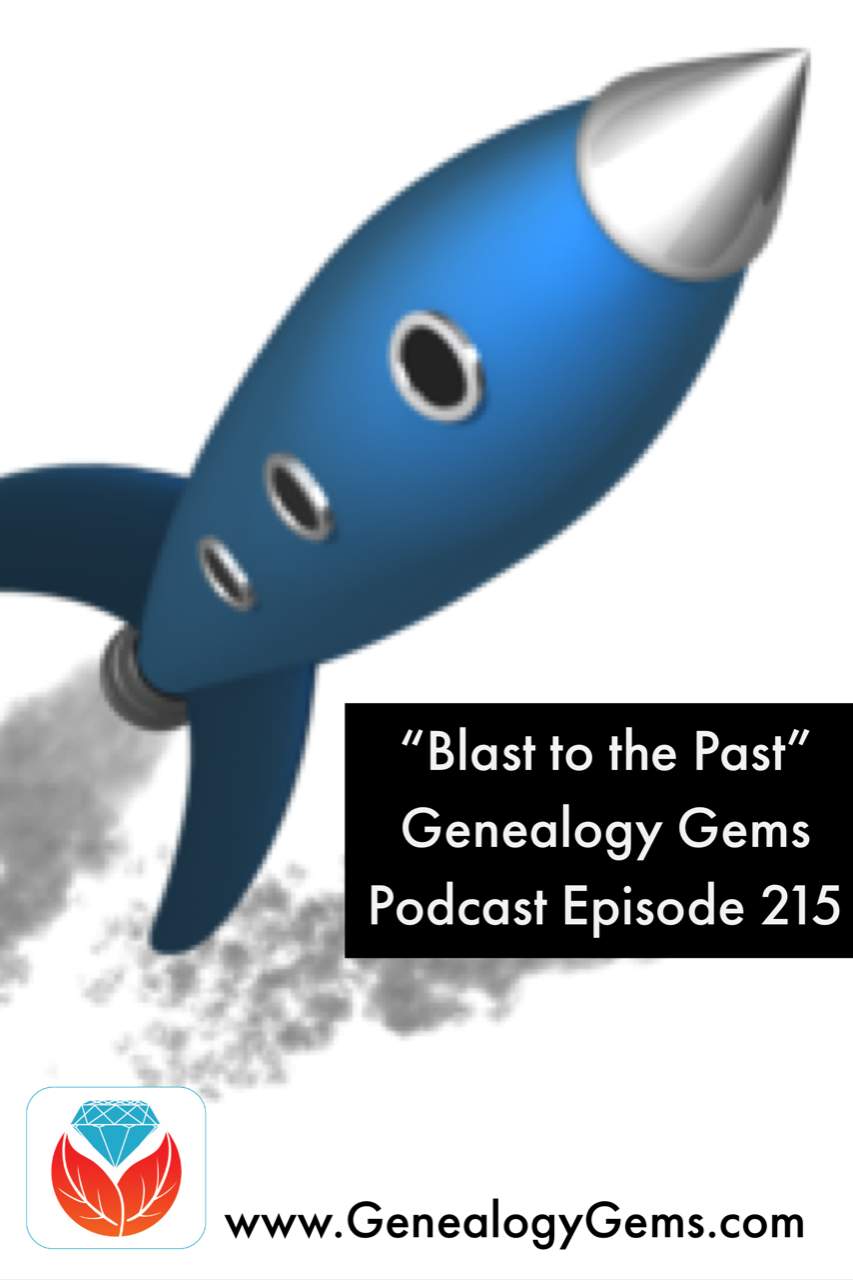
In this “Blast from the Past” episode, Lisa gives voice to the era of silent films, in a unique approach to understanding her great-grandmother’s life. Her passion for this mostly-forgotten film genre comes through in her conversation with film archivist Sam Gill of the Niles Essanay Silent Film Museum in Fremont, California.
Don’t miss these fun segments, too:
A listener writes in after discovering a birth mom’s story in passport records (see what lengths he goes to in order to access the records!).
Just after RootsTech 2018, Your DNA Guide Diahan Southard reports on the latest DNA news you’ll want to know.
NEWS: DNA NEWS ROUNDUP
First up was MyHeritage, showing their support for the 7 million adopted individuals in the United States with their new DNA Quest campaign. MyHeritage will provide 15,000 DNA test kits to eligible participants free of charge, in order to help these adoptees use DNA to reunite them with their biological families. With this initiative they “hope to make this project a shining light for corporate philanthropy and an example to be followed by other commercial companies in their own lines of expertise to make the world a better place.” MyHeritage has assembled an advisory board of genetic genealogists and genetic counselors to help drive this project and ensure it meets the needs of the community. If you or someone you know is interested in participating, you can head on over to the DNA Quest website (www.dnaquest.com) to fill out an application. But you better hurry, the application deadline is April 30, 2018.
Next, addressing the biggest problem in genetic genealogy, namely the looming What Next? question facing millions of newly swabbed participants, MyHeritage announced the Big Tree ? a giant network of genetic and genealogy results that will automate much of the match comparison and tree searching to replace your head-scratching with light-bulb moments. They have already made significant headway on this project, as reported in the journal Science, which MyHeritage’s own chief scientific officer Yaniv Erlich collaborated on. The journal reports that the team of scientists successfully extracted public family trees from Geni.com (a MyHeritage daughter company), and then used a computer program to clean up and link the trees together. It sounds like MyHeritage will be adding genetic data to this kind of tree data in their Big Tree project.
MyHeritage isn’t the only company out to improve the DNA matching experience. UK based LivingDNA announced that they plan to add DNA matching to their popular origins test by third quarter 2018. When they launched in October of 2016, LivingDNA was not offering cousin matching, but opted instead to focus all of their resources on providing very detailed origins reports, including breaking down the UK in to 46 categories. In the months since their launch, they have been working on a genetic matching system, called Family Networks, that will appeal to a wide range of users and will “reduce the risk of human error and take away the tedious task of figuring out how each person on a user’s list are related to one another.” They are promising an experience that provides “a level of relationship prediction and specificity beyond anything currently on the market.”
So it sounds like if you are currently struggling with turning your DNA matches into genealogical discoveries, our testing companies want you to know you are not alone, and they are working hard to provide solutions to these problems. Time will only tell if they can succeed.
Diahan also provides answers to questions asked about this blog post announcing updates to MyHeritage DNA matching technology and its new chromosome browser.
MAILBOX: TOM’S PASSPORT SEARCH SUCCESS

Kathleen Head’s passport applications
U.S. passport applications on Ancestry and FamilySearch through 1925
National Archives article on passport applications
U.S. State Department passport application (since 1925) copy requests
Frequently asked Questions about the Freedom of Information Act
BONUS CONTENT for Genealogy Gems App Users
If you’re listening through the Genealogy Gems app, your bonus content for this episode is a marvelous soundtrack of silent film music, played live (you’ll hear audience laughter occasionally in the background) and supplied by Sam Gill at the Niles Essanay Silent Film Museum. The Genealogy Gems app is FREE in Google Play and is only $2.99 for Windows, iPhone and iPad users.
GEM: INTRODUCTION TO SILENT FILMS
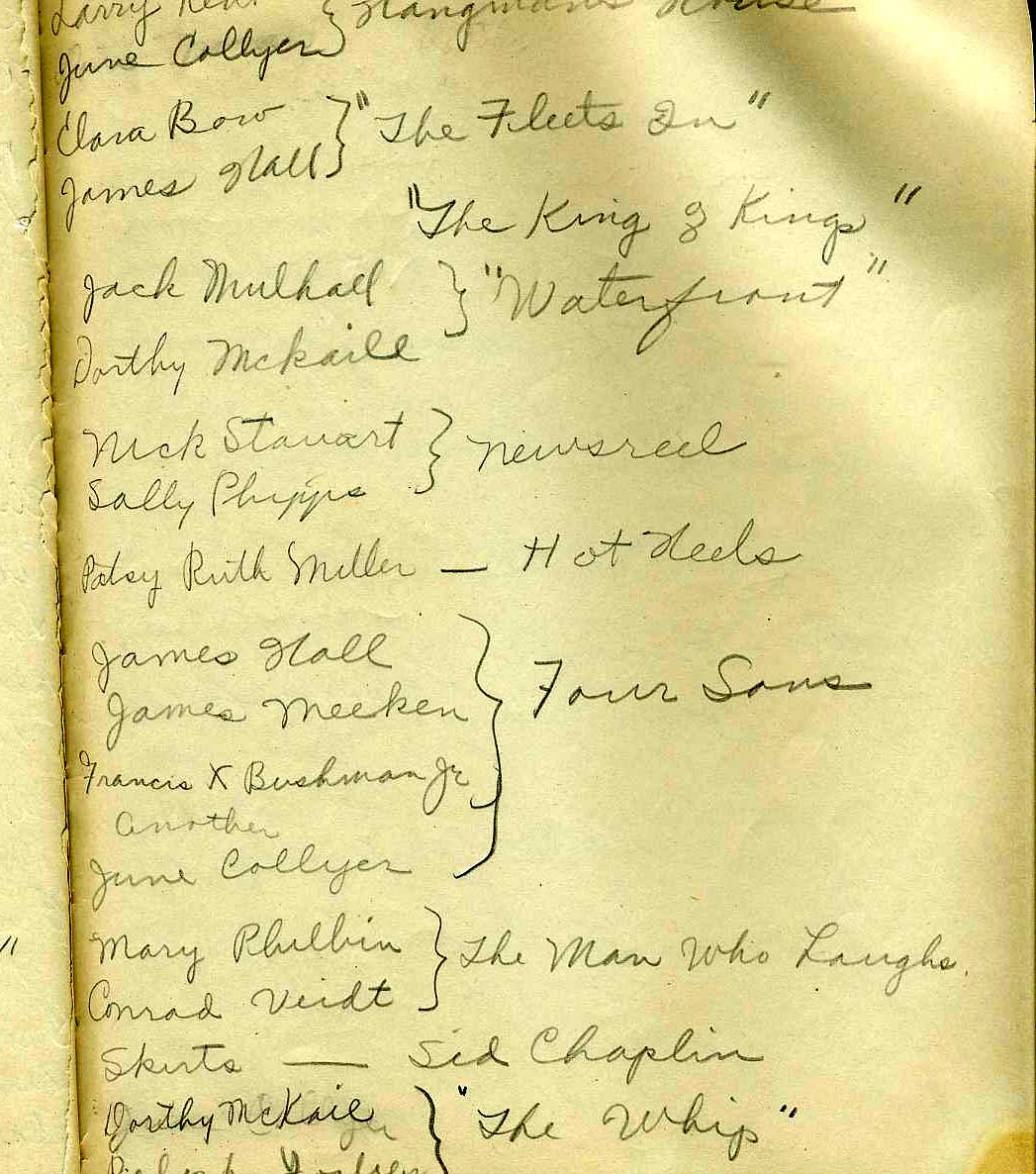
(Image above: a page from Lisa’s grandmother’s journal)
Genealogy Gems Podcast Episode #2 about transcribing family journals and letters was remastered in Episode #134.
Episode #8
Stanford Theatre, Palo Alto, CA (shows silent films)
Internet Movie Database (IMDB)
Niles Essanay Silent Film Museum: the website for this museum is packed with resources: links to Chaplin-Keaton-Lloyd film locations; the International Buster Keaton Society; Classic Images Magazine; a timeline and early history of film and more.
Films mentioned in this episode:
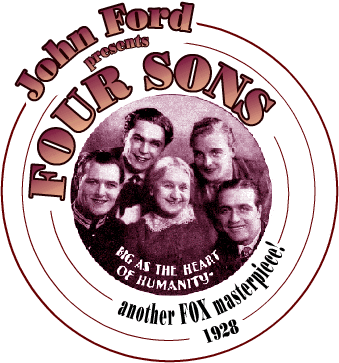
Diary of a Lost Girl starring Louise Brooks (watch trailer)
Safety Last starring Harold Lloyd (watch here)
The Mender of Nets with Mary Pickford (watch here)
The Blot directed by Lois Weber (watch here)
Don’t Park There with Will Rogers (watch here)
Flivvering by Victor Moore
Wife and Auto Trouble directed by Bill Henderson (watch here)
A Trip Down Market Street (watch here)
Wings (watch here)
All Quiet on the Western Front (watch here)
Destruction of San Francisco by Blackhawk Films (watch part here)
Four Sons (watch trailer)
INTERVIEW: SAM GILL, FILM HISTORIAN AND ARCHIVIST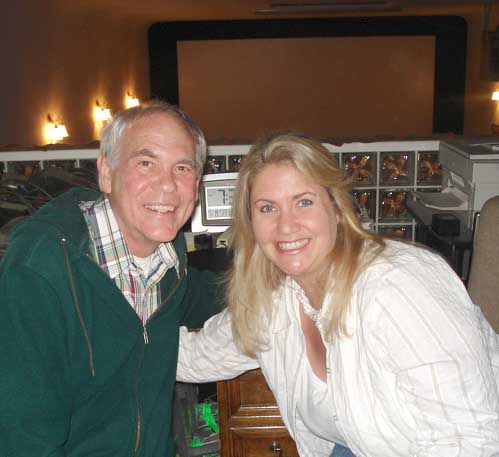
Shown here: Sam Gill and Lisa Cooke at the Niles Essanay Silent Film Museum on the day of this interview. Throughout their conversation, you hear the sounds of excited theater patrons filling the auditorium before a screening.
Sam Gill’s interest in silent film dates to 1966, when as a college student he traveled to Hollywood to interview his aging heroes from the silent screen comedy era. For more than 20 years, he was Archivist of the Academy of Motion Picture Arts and Science’s Margaret Herrick Library, where he established the Academy’s Special Collections and helped it grow to its current status as the preeminent repository for the study of American cinema. He is currently a Board Member of the Niles Essanay Silent Film Museum. Over the years, he has consulted on or otherwise contributed his expertise to numerous film festivals, museum film programs and film history books.
Sam recently sent us these delightful photos (below) of himself over the years:
- (Image 1) 1966: His first trip to Hollywood
- (Image 2) 1974: A news article about a research trip to Florida
- (Image 3) 2017: A birthday party for Diana Serra Cary (Baby Peggy), the last surviving star of the silent screen, held at the Edison Theater of the Niles Essanay Silent Film Museum; also shown is Rena Kiehn, the museum’s publicity director and store manager
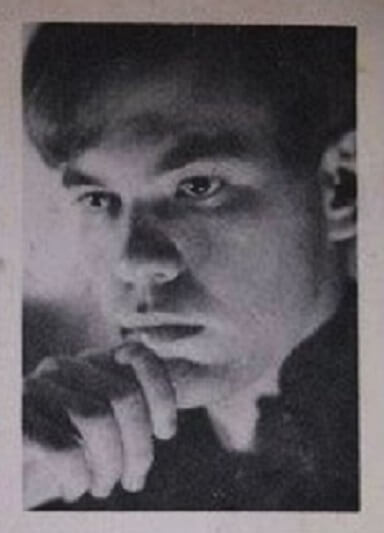
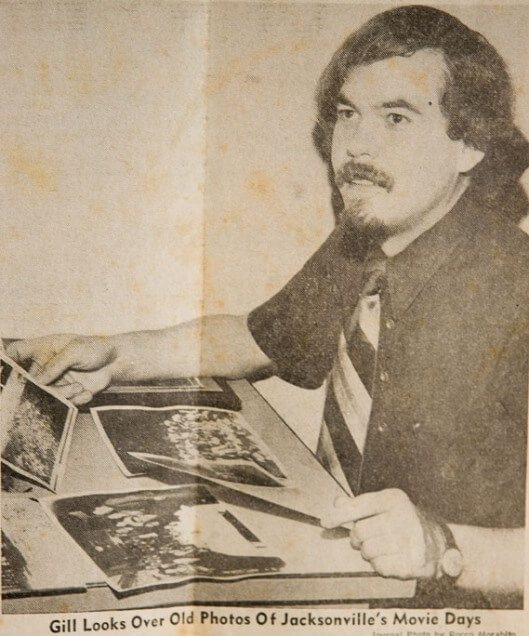

San Francisco Silent Film Festival
How to identify old cars in photographs (a technique that adapts well to film!)
National Film Preservation Foundation (click here to see where to find films they have helped preserve, including Japanese internment camp footage)
MyHeritage.com is the place to make connections with relatives overseas, particularly with those who may still live in your ancestral homeland. Click here to see what MyHeritage can do for you: it’s free to get started.
GEM: HOW TO FIND SILENT FILMS
If you’re looking for a specific movie, start with a Google search with the name in quotations (and, if you like, anything else you know about it, such as an actor or director’s name or the year). You may find lots of results, including a Wikipedia page and film history write-ups, but if you want to WATCH it, limit your search results to Video.
You can also turn to free curated collections online, such as:
101 free silent films: the great classics (links to free film footage on YouTube, Internet Archive, etc.)
YouTube playlist of silent movies
Internet Archive Silent Films collection: feature and short silent films uploaded by Internet Archive users
Silentmovies.info: watch several classic silent films
Netflix.com: Netflix subscribers can access the service’s little-known collection of silent films by entering the Netflix link for browsing its film categories and then the category specific to silent films, 53310:
http://www.netflix.com/browse/genre/ 53310
(Click here to read an article about this tip, along with Netflix’ full list of specific film categories.)
YouTube: watch for free, rent or buy, as shown here:
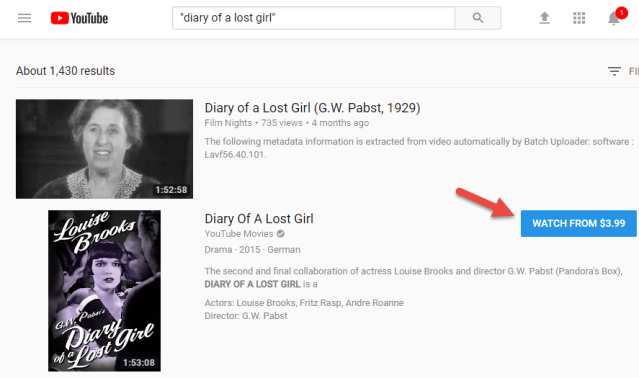
More places to explore for silent films:
Turner Classic Movies (TCM.com): under TCMDb, click Database Home and search for a title you want to watch
Amazon.com: Search for titles in the Video section; or search the Classic Silent films category
Your local public library (search catalog: try searching for an actor’s name as author)
Ebay: May be the right place to purchase a hard-to-find title. Click here to view current results for a search on silent films, filtered to include only movie/film items.
PRODUCTION CREDITS
Lisa Louise Cooke, Host and Producer
Sunny Morton, Editor
Diahan Southard, Your DNA Guide, Content Contributor
Hannah Fullerton, Production Assistant
Lacey Cooke, Service Manager
Disclosure: This document contains affiliate links and Genealogy Gems will be compensated if you make a purchase after clicking on these links (at no additional cost to you). Thank you for supporting this free podcast and blog!
FREE NEWSLETTER:
Resources
Episode 206 – Publishing Family History Books
Genealogy Gems Podcast Episode 206

with Lisa Louise Cooke
In this Blast from the Past episode:
- Lisa reprises a favorite research detour into vehicle forensics to identify an old family car and shares tips for creating short family history books like those she given as holiday gifts to loved ones.
- Hear letters from listeners on a special adoption discovery and a 1940 census mystery that now makes more sense.
- Your DNA Guide Diahan Southard weighs in with 4 reasons to take a DNA test if you haven’t taken the plunge yet.
- Genealogy Gems Editor Sunny Morton spotlights the current Genealogy Gems Book Club title, Murder in Matera.
- The vehicle forensics and family book segments originally appeared in Genealogy Gems Podcast episodes 18 and 13, respectively, and are being republished here for web audiences.
MAILBOX: RICHARD ON THE 1940 CENSUS

1940 census tip: Listen in Genealogy Gems Episode 201 or read it on the Genealogy Gems blog.
Evidentia software helps genealogists organize and analyze their research discoveries. Free 14-day trial available.
MAILBOX: ADOPTEE DISCOVERY

Tips for using DNA to solve adoption mysteries, taken from a conversation between genetic genealogy experts Your DNA Guide Diahan Southard and CeCe Moore from DNA Detectives.
Join our conversations on the Genealogy Gems Facebook page.
BONUS CONTENT for Genealogy Gems App

If you’re listening through the Genealogy Gems app, your bonus content for this episode is an audio excursion with Lisa on an old railroad track up to a silver mine in the Colorado Rockies, an excursion she originally shared in Episode 18 of the Genealogy Gems Podcast, not now available online, and is being republished here exclusively for your enjoyment. The Genealogy Gems app is FREE in Google Play and is only $2.99 for Windows, iPhone and iPad users
GEM: MAKING FAMILY HISTORY BOOKS

Genealogy Gems Podcast episode 2 with a segment on transcribing diaries was republished as Genealogy Gems episode 134.

Qualities of a successful short family history book, from Lisa Louise Cooke
- The book conveys an overall theme.

Start by reviewing all the available material you have. That will give you a good sense of what the time period was like for your ancestor. You’ll also start to understand their goals, experiences, and emotions. Ultimately a theme should begin to surface.
In the case of A Nurse In Training, I wanted to communicate my grandmother as a young woman taking on a new adventure away from home that ultimately led to this warm, caring woman’s successful career as a nurse. I also tucked a bonus subplot in there of how she just happened to meet her husband at the same time!
You don’t need every scrap of research and every photo to get this theme across. It’s your job to be a sharp editor and to pick out the critical pieces. You want the words and photographs that clearly communicate your theme to the reader.
#2. The book can be read in one sitting.
Like it or not, if it takes too long read, they probably won’t. Strive to create a book that doesn’t look intimidating. I create books that are ten to twenty double-sided pages. People will be willing to pick up a thinner book off the coffee table. If it’s well done they’ll find that all of a sudden they’ve finished the entire book without wanting to put it down. The final goal is that they will walk away with a real sense of having gotten to know that ancestor.
#3. It contains the best of the best of what you have.
This goes back to conveying the theme and being a strict editor. My grandma had many funny stories, but there just wasn’t room for all of them. I picked the best of the best. Anyone who reads the book should hopefully come away with the fact that she had a sense of humor and could laugh at herself. So keep the content of your book focused, full of graphics and photos, and including the best of the best. If you can capture their interest in the first three pages, you’ll have them for the entire book.
#4. There are lots of photos and graphics.

A picture is definitely worth a thousand words. Since the number of words in this size book will be limited, photographs will be your best friend. If you’re lacking in family photos, many of my previous podcasts will give you countless ideas for locating associated photos. In A Nurse In Training, I included scanned images of skating rink tickets, programs and announcements from my grandma’s scrapbook, and journal pages in my grandmother’s own hand. These types of items really add texture and interest to your book, as well as help the reader to see that you’ve really done your homework.
#5. Keep it in chronological order.
This may seem obvious, but it’s easy to get sidetracked and start going back and forth in time. Believe me, for the reader’s sake keep things in chronological order. You as the researcher know this information backward and forwards, but this is probably your reader’s first exposure to it. Be gentle with them and keep it straight forward and simple. Your reader will thank you.
#6. You choose only high-quality images and printing.
High-quality glossy pages, good image quality and a hardcover binding all shout to the reader “I’m worth your time, read me!” For example, I found a drawing of Dameron Hospital where my grandmother worked, but it was a low-quality image and didn’t translate well in the book. As much as I wanted to include it, I ended up leaving it out. I’m glad I did; it wasn’t critical to the book and there were other ways to communicate the hospital to the reader.
Start creating fabulous, irresistible videos about your family history with Animoto.com. You don’t need special video-editing skills: just drag and drop your photos and videos, pick a layout and music, add a little text and voila! You’ve got an awesome video! Try this out for yourself at Animoto.
MyHeritage is the place to make connections with relatives overseas, particularly with those who may still live in your ancestral homeland. Click here to see what MyHeritage can do for you: it’s free to get started.
4 REASONS TO RSVP YOUR DNA INVITATION
with Diahan Southard, Your DNA Guide
I used to think that economics was just a series of numbers and calculations that helped to gauge the future growth of companies and countries. In a word: boring. But that was before I discovered that you can study the economics of people and essentially use math to describe human behavior, and therefore in some ways make that behavior more predictable.
This is of course especially intriguing to my current situation as the parent of a teenager, a pre-teen, and a daughter. Teenagers especially are always talking about the things that “everyone else has,” a phenomenon that Malcom Gladwell, one of these interesting people-economists, describes as the “tipping point.” He says that the tipping point is “the moment of critical mass, the threshold, the boiling point.” For my kids it’s everything from the point at which a party becomes fun to doing everything that is humanly possible to procure a fidget-spinner (if you don’t know what that is, ask the nearest 11 year old).
In DNA testing in the United States, that tipping point is now. We have reached the point where most genealogists at least have the passing notion that genetics can be useful in genealogy. Most genealogists (I would guess 85%) who attend the lectures I give have already had at least one DNA test completed. Let’s stop for just one minute and recognize how incredible that is! Not too long ago I was still trying to convince people that this was a good idea and that you didn’t have to dig up your ancestors to do it! But now we have scores of genealogists who have not only tested themselves, but have convinced half their family to test as well!
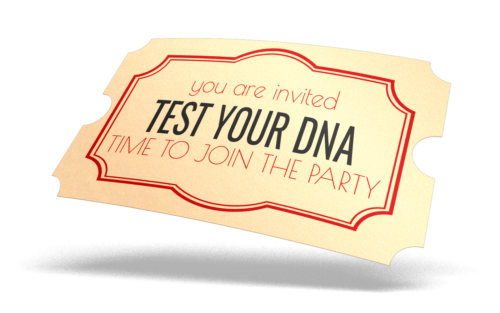
This got me thinking though, who are those people who haven’t tested? And why not? One category of people sans DNA test are those who have full pedigree charts. I have heard many of them say that they don’t see the need to do DNA testing since they have most of their lines “way back.” To those with the blessing of ancestors who kept better records than mine, I am offering four reasons why you should RSVP to your invitation to DNA test.
- Record. First and foremost, your DNA is a record. Just as you have obtained birth certificates and marriage licenses for your ancestors, your DNA is a unique record. It does represent you and your family in a way that no other record can. It is a document of your genetic history, and should be preserved. Further, while you may doubt the ability of your DNA to shed light on your current genealogy, don’t underestimate the contribution it might make in the future.
- Second Cousins. And third cousins, and fourth cousins, etc. Having your DNA tested means you can see a biological connection between you and other relatives that have had tested. For many, the idea of meeting or forming relationships with distant cousins is not appealing. But even if you have no intention of attending DNA family reunions or even in corresponding with these relatives, there is something reassuring about seeing them there on your match list. There is a certain thrill that comes with recognizing the connection between you and someone else. A connection that may not add any new names to your tree, but it helps you feel a deeper connection to your ancestor, and a greater appreciation for your biology.
- Verify. Which brings me to the next point. Seeing these cousins on your list can actually help verify the genealogy you have already collected and documented. It helps to reassure you that you have made the right steps along the way, and may help you gain additional resources about your relative through their descendants that you find on your match list. Resources that can help turn that ancestor from a name on a chart, to a story and a life worth preserving.
- Philanthropy. The last reason to go ahead and have your DNA tested is to help others. If you have been lucky enough to fill in most of the blanks on your tree, you can help others do the same by simply having your DNA tested. Your DNA provides a link to your tree that might be just what someone needs to overcome a brick wall in their family history.
So, if you have been hanging out on the outskirts of DNA testing because you feel like your tree is full enough without it, remember to RSVP to your invitation to be DNA tested, and join the party!
GENEALOGY GEMS BOOK CLUB: A FAMILY HISTORY MURDER MYSTERY!
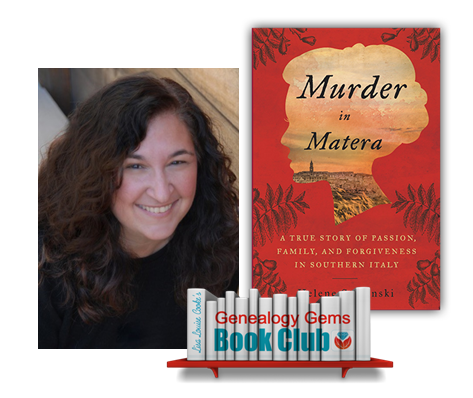
Murder in Matera: A True Story of Passion, Family, and Forgiveness in Southern Italy by journalist Helene Stapinski. A story of poverty and power, love, tragic decisions, and a courageous and desperate woman’s leap for a new life across the ocean.
Murder in Matera continues to unravel a past Helene explored in her fantastic first family history memoir, Five-Finger Discount: A Crooked Family History. Find a whole list of fabulous family history-inspired reading at the Genealogy Gems Book Club!

Genealogy Software
Lisa Louise Cooke uses and recommends RootsMagic family history software. From within RootsMagic, you can search historical records on FamilySearch.org, Findmypast.com and MyHeritage.com. RootsMagic is now fully integrated with Ancestry.com, too: you can sync your RootsMagic trees with your Ancestry.com trees and search records on the site.

Visit http://www.backblaze.com/lisa
Keep your family history research, photos, tree software files, videos and all other computer files safely backed up with Backblaze, the official cloud-based computer backup system for Lisa Louise Cooke’s Genealogy Gems. Learn more at http://www.backblaze.com/lisa.
GEM: VEHICULAR FORENSICS: Updated links, tips and resources
Here’s the original photo of my grandma next to her father’s car:

The original zoomed in image of the license plate:

The license plate with the “alternative light source” applied:

Since I first published this episode, iGoogle has gone away.
Websites for identifying old cars:
Hubcap Café.com: Collector Car Resources
Flickr group called Vintage Car Identification
From ItStillRuns.com: “Veteran cars were manufactured before 1903, vintage cars were made between 1903 and 1933, and classic cars are considered to be vehicles manufactured from 1933 until fifteen years ago.”
Learn more about ArchiveGrid in Premium Podcast episode 149 (Genealogy Gems Premium subscription required) and in this blog post: How to find original manuscripts and documents using ArchiveGrid.
The Genealogist’s Google Toolbox by Lisa Louise Cooke for Google searches and even YouTube:

Available in the Genealogy Gems Store
“Take a ride in a 1928 Willys Knight made in, owned in and driven in Toledo, Ohio”
Forensic Files channel on YouTube
More updated resources:
“The Colorful History of California License Plates” in LA Magazine
- WorldLicensePlates,com
- California DMV license plate introduction
- California State Archives
- Willys Overland Knight Registry website and Facebook page
- Inflation Calculator
TIP: Remember that you may be able to make great discoveries IN old photos with your photo editing software (even just with whatever free software is on your computer):
1. Open up the photo editing software
2. Open the photograph in question in the program
3. Use the trim feature to zoom in on the license plate?or whatever feature you want to focus on
4. Zoom in to make it easier to see
5. Try using both the Brightness and Contrast feature of your program in combination until you achieve a favorable result
6. Apply Auto Sharpen for further detail
Savvy tips to help identify old photos
Photo editing apps and software for family history
The Photo Detective by Maureen Taylor is your ultimate guide to identifying old objects in pictures to help you learn more about your family history.
PROFILE AMERICA: FIRST TRAFFIC LIGHT
PRODUCTION CREDITS
Lisa Louise Cooke, Host and Producer
Sunny Morton, Editor
Diahan Southard, Your DNA Guide, Content Contributor
Hannah Fullerton, Production Assistant
Lacey Cooke, Service Manager






